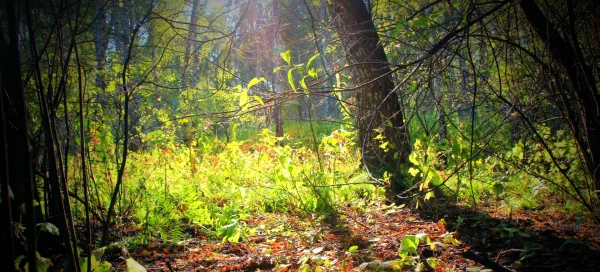Overview
The Western Green Mamba (Dendroaspis viridis) is a venomous West African snake. It is known for its striking green coloration, which provides excellent camouflage in its natural habitat. This species, which can reach lengths of up to 2 meters, is slender and agile, adept at moving through trees and bushes. Unlike its relative, the Eastern Green Mamba, the Western Green Mamba tends to be more terrestrial, though it is still an excellent climber.
The Western Green Mamba’s venom is potent, containing neurotoxins that can be fatal to humans if not treated promptly. Despite its dangerous nature, this snake is generally shy and avoids contact with humans. It preys mainly on birds and small mammals, using its speed and venom to swiftly incapacitate its prey. The Western Green Mamba is solitary, coming together with others only for mating purposes.
This snake’s presence in folklore and culture is significant, often symbolizing danger and stealth. In some West African cultures, the Western Green Mamba is respected and feared, with various myths and stories surrounding it. Conservation-wise, the species faces threats from habitat destruction and is sometimes killed on sight due to fear of its venom.
Taxonomy
Kingdom
Phylum
Class
Order
Family
Genus
Species
Type
Physical Description:
The Western Green Mamba is characterized by its vibrant green color, which varies in shade along its body. Adults typically have a brighter, more vivid green on their dorsal side, while their ventral side is a lighter green or yellowish-green. This snake has a slender body, a narrow head distinct from its neck, and smooth scales that give it a glossy appearance. Its eyes are medium-sized with round pupils, and its overall appearance is sleek and agile.
Juvenile Western Green Mambas are paler than adults, often starting with a more yellowish hue that deepens into green as they mature. The snake’s body is built for speed and agility, essential for hunting and evading predators. It can reach considerable lengths, typically around 1.5 to 2 meters, with some individuals growing longer. The Western Green Mamba’s tail is long and tapering, aiding balance and movement, especially in trees.

Lifespan: Wild: ~15 Years || Captivity: ~18 Years

Weight: Male: 3.3-4.4 lbs (1.5-2 kg) || Female: 3.5-4.6 lbs (1.6-2.1 kg)

Length: Male: 60-78 inches (152-198 cm) || Female: 62-80 inches (157-203 cm)

Top Speed: 7 mph (11.27 km/h)
Characteristic:
Native Habitat:
The Western Green Mamba is native to various parts of West Africa, primarily in coastal regions. Its habitat includes tropical rainforests, mangroves, and woodland areas where it can find ample cover and a good supply of prey. The snake prefers dense vegetation, providing camouflage and opportunities for ambush hunting. It is also found in agricultural areas and plantations, where it may come into contact with humans.
In addition to forested areas, the Western Green Mamba can adapt to disturbed habitats, including areas near human habitation. However, it generally avoids open spaces and prefers to stay hidden within the foliage. The snake’s ability to climb and move through trees is a crucial aspect of its habitat preference, as it allows for efficient hunting and escape from predators.
Climate Zones:
Biomes:
Biogeographical Realms:
Continents:
Countries:
Diet:
Diet & Feeding Habits:
The Western Green Mamba primarily feeds on birds and their eggs, small mammals, and occasionally other reptiles. Its diet reflects its arboreal nature, as it often hunts in trees where birds are abundant. The snake uses its speed and agility to catch prey, delivering a quick, nasty bite to immobilize or kill it. After envenomating its prey, the mamba swallows it whole, starting with the head.
In addition to live prey, the Western Green Mamba is also known to consume carrion, particularly when live prey is scarce. Its feeding habits are opportunistic, and the snake adapts to food availability in its environment. The mamba’s venom is a tool for subduing prey and a defense mechanism against potential predators. Young mambas feed on smaller prey, such as lizards and small rodents, until they are large enough to tackle birds and larger mammals.
Mating Behavior:
Mating Description:
The Western Green Mamba’s mating behavior involves a courtship ritual in which the male seeks a receptive female. During courtship, the male may engage in a display that includes raising his body and spreading his neck. If the female is receptive, she allows the male to align his body with hers for copulation. Mating typically occurs during the dry season, but the timing can vary based on environmental conditions.
After mating, the female lays a clutch of eggs, usually in a hidden location like a hollow tree or a burrow. The eggs are elongated and have a leathery texture. The female does not exhibit parental care after laying the eggs, leaving them to incubate independently. The incubation period varies but is generally around 10 to 12 weeks, after which the young hatch fully independent.
Reproduction Season:
Birth Type:
Pregnancy Duration:
Female Name:
Male Name:
Baby Name:
Social Structure Description:
The Western Green Mamba is a solitary snake, with individuals only coming together for mating purposes. Outside of the mating season, each snake maintains its territory and avoids interaction with others of its species. This solitary nature is common among many venomous snakes, as it reduces the risk of injury from encounters with other snakes. The Western Green Mamba’s territory size varies depending on the food availability and habitat.
In their territories, Western Green Mambas exhibit a strong preference for certain hunting and resting spots. These snakes do not build nests or permanent dens but instead use features of their environment, like tree branches or hollows, for resting. Territorial disputes are rare, as the snake tends to avoid conflict. When threatened, the Western Green Mamba is more likely to flee than engage in an aggressive confrontation.
Groups:
Conservation Status:
Population Trend:
The Western Green Mamba’s population in the wild is not precisely quantified, but it is believed to be stable in areas where its habitat is intact. The species is not considered endangered, but it faces habitat loss and fragmentation threats. In some regions, the snake’s presence in agricultural areas leads to conflict with humans, often resulting in the killing of the snake.
Conservation efforts for the Western Green Mamba mainly focus on habitat preservation. They maintain the forests and woodlands where the snake lives so they can stabilize its population. The species benefits from protected areas where its natural habitat is conserved. However, outside protected areas, the snake is vulnerable to habitat destruction due to logging, agriculture, and urban expansion.
Population Threats:
Habitat loss and fragmentation are the primary threats to the Western Green Mamba. As forests and woodlands are cleared for agriculture or urban development, the snake’s natural habitat is reduced. This leads to declining prey availability and increased human encounters, often resulting in conflict.
In some regions, the Western Green Mamba is killed on sight due to fear of its venom. While this persecution is not a major threat to the species, it can impact local populations. The illegal pet trade also risks the species, as individuals are sometimes captured for sale in the exotic animal market. Climate change could also affect the snake’s habitat and food sources.
Conservation Efforts:
Conservation efforts for the Western Green Mamba are focused on habitat preservation. Protecting and restoring forests and woodlands is crucial for the survival of this species. Conservation programs also aim to raise awareness about the snake, reducing fear and conflict with humans. Efforts to regulate the exotic pet trade are also important to prevent the illegal capture and sale of the species.
Environmental education programs in areas where the Western Green Mamba is found can help communities understand its importance in the ecosystem. By educating people about the snake’s role and reducing fear through knowledge, conservationists hope to decrease the incidence of snake killing. Protected areas play a key role in conserving the Western Green Mamba’s habitat, ensuring the species has a safe environment to thrive.
Additional Resources:
Fun Facts
- The Western Green Mamba’s venom is one of the fastest-acting among all snake venoms.
- Despite its reputation, this snake is shy and avoids human contact whenever possible.
- The Western Green Mamba can be distinguished from other green snakes by its more vibrant color and slender body.
- It is one of the few snake species that can change color slightly depending on temperature and mood.
- Unlike many snakes, the Western Green Mamba is active mainly during the day.
- The species can climb with exceptional agility and speed, making it a proficient arboreal hunter.
- Western Green Mambas have excellent vision, which they use to detect the movement of prey and predators.
- This snake has lived up to 18 years in captivity, which is longer than in the wild.
- The Western Green Mamba’s striking green coloration is an excellent example of camouflage in the wild.
- This species is often mistaken for the Eastern Green Mamba, but the two have distinct ranges and some differences in appearance.







